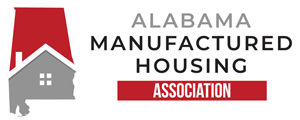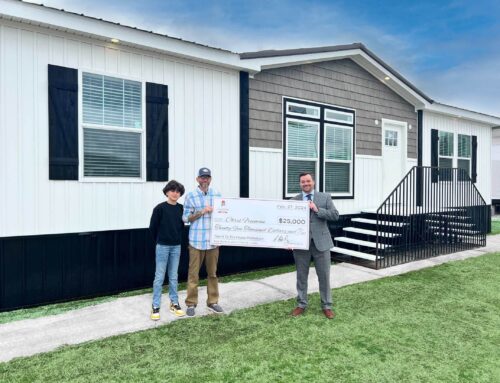
Safety Standards for Manufactured Homes
We often see a number of misconceptions surrounding manufactured and prefabricated homes, and we’re here to dispel the myths. Manufactured and modular homes are strong, durable and built to specific building standards – standards that measure up to that of traditional home builds. In fact, manufactured homes are the only type of housing that are built to a national, uniform standard.
In fact, there are a number of manufactured home safety standards that must be met in order to be recognized and approved by the U.S. Department of Housing and Urban Development, among other state, federal, and well-recognized safety programs, and most manufacturers exceed these requirements. Learning about them will help you grasp a better understanding of the essence of manufactured homes.
HUD Recognition
The following is the definition of a manufactured home, according to HUD.
Manufactured homes are those built entirely in a factory. They are then transported to a building site and installed. A manufactured home is a single-family dwelling built according to the U.S. Department of Housing and Urban Development (HUD) Manufactured Home Construction and Safety Standards Act, which is a national, preemptive building code.
In 1974, Congress passed the National Manufactured Housing Construction and Safety Standards Act, authorizing HUD to establish construction standards for manufactured homes. Congress most recently updated that act in 2002.
In passing the law and its amendment, Congress intended to protect the quality, durability, safety, and affordability of manufactured homes; to facilitate the availability of affordable manufactured homes and increase homeownership; to provide for the establishment of performance-based construction standards for manufactured homes and to encourage cost-effective construction techniques for such structures.
Congress also authorized the establishment of a Manufactured Housing Consensus Committee to assist HUD in the development. In addition, Congress authorized HUD to establish minimum manufactured home installation standards that could be used to provide for the initial installation of new manufactured homes and the resolution of disputes between consumers, retailers and manufacturers.
HUD Manufactured Home Safety and Construction Standards
Planning Considerations
HUD’s intent of monitoring planning considerations is to, in their words, ensure the adequacy of architectural planning aligns with a safe and healthful environment. This section of guidelines and regulations encompasses ceiling heights, every room must be at least 7 feet tall; exterior doors and windows, every manufactured home must have at least two separate doors to the outside world and each bedroom must have at least one window; privacy standards, bathrooms must have a lock device; interior passage/space, doors must open and allow access throughout the home; room requirements, at least one room must have at least 150 square feet of space; minimum room dimensions; toilet facilities, each bathroom must have a minimum width of 30 inches with a minimum clear space of 21 inches in front of each toilet; hallways and glass and glazed openings.
These are just the basics, but encompass much of what HUD is looking for in terms of the overall structure.
Fire Safety
The purpose of HUD’s fire safety regulations is to mandate reasonable fire safety for the occupants of the manufactured home by reducing hazards and providing measures for early fire hazard detection.
Fire safety requirements include regulating the use of combustible versus noncombustible materials and the inclusion of an adequate amount of working fire alarms throughout the property. Just like a traditional home, a manufactured home must meet the same fire safety standards.
Construction Requirements
Construction requirements for manufactured homes detail the minimum standards for materials, products, equipment, and workmanship needed to assure that the manufactured home will have the following:
– Structural strength and rigidity
– Protection against corrosion, decay, insects, and rodents
– Protection against wind
– Resistance to the natural elements
– Durability and economy of maintenance
Plumbing
Safety standards for manufactured home plumbing systems covers the plumbing materials, fixtures and equipment installed within or on manufactured homes. According to HUD, it is the intent of its plumbing safety standards to assure the use of water supply, drain, waste, and vent systems that permit satisfactory functioning and provide for health and safety under all conditions of normal use.
Transportation
To be approved by HUD, a manufactured home must stand stationary in a single dwelling after the initial construction and transportation of the establishment is complete. Of course, however, HUD recognizes that manufactured homes are built offsite from their final and permeant destination.
HUD’s safety standards for manufactured home transportation covers the general design requirements that ensure the structure of the manufactured home will fully withstand the potentially adverse effects of transportation shock and vibration without degradation of the integrated structure or of its parts.
According to HUD, the effect of highway transportation upon a manufactured home structure might result in incremental degradation of its designed performance in terms of providing a safe, healthy, and durable dwelling. Therefore, HUD requires the manufactured home to be designed to fully withstand such transportation forces during its intended life.
Luckily, AMHA works with HUD-certified retailers and modular home manufacturers. You can find one here.
The Bottom Line
HUD’s safety standards and regulations for manufactured homes extend beyond the points we’ve touched. To get a better understanding of the full scope of safety regulations for modular homes, visit the HUD page for manufactured homes’ construction and safety programs.
What we find important to take away from here, though, is that the safety regulations for manufactured homes mirror that of a traditional site-built home. Outside of transportation, very little differs from that of a home built on a permeant site. Therefore, it’s safe to conclude that manufactured and modular homes are strong, durable and built to specific building standards.
At AMHA, we fully support the manufactured home community! To learn more about manufactured homes, visit our many resources.






